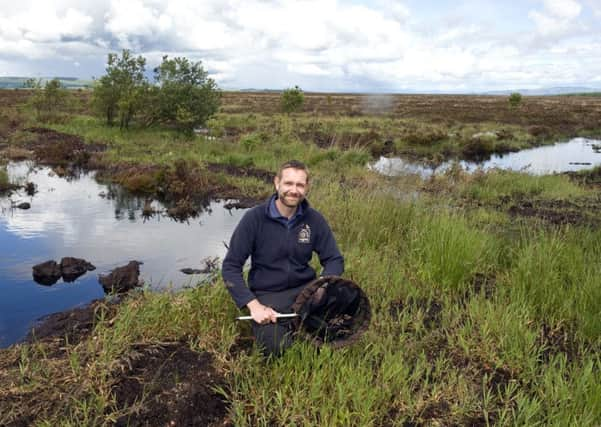For peat's sake, keep this bog in the ground


That’s according to the charity Buglife, which has been working to restore 210 hectares of damaged bog over the past two years.
Mind you, those making the trek across Europe would have been reindeer or giant elk, perhaps. After all, when Slamannan bog was forming, human settlements were not to be found in Scotland.
Advertisement
Hide AdAdvertisement
Hide AdBuglife conservation officer Dr Scott Shanks said the team was stunned to discover just how old the land they were working to protect actually was.
“It’s astonishing to think it was formed just after the last ice age,” he said.
“Under ideal conditions, peat accumulates at about 1mm per year; so it was quite a shock to discover that parts of Fannyside Muir hold over nine metres of preserved plant fragments, pollen and animal remains!
“It’s possible that some of the sphagnum mosses and other bog-specialist plants and invertebrates at Fannyside Muir may have survived there continuously for over 9000 years.”
And yet its incredible age is only a part of the story.
Advertisement
Hide AdAdvertisement
Hide AdThe bog has a vital place in our modern world too – without it we’d be heading for an ecological disaster.
The raised lowland bog is of huge national – even global – significance. And its value to the environment is increasing all the time as similar land has disappeared at an alarming rate.
Over 80 per cent of Scotland’s bogs have been lost or damaged in the last 200 years, mainly due to drainage for agriculture, forestry and commercial peat extraction.
Fannyside Muir has suffered from all three.
For years, huge industrial operations would drain the site and rip the peat from the ground. And as soon as the peat was removed, there was a massive release of greenhouse gases, as thousands of years of semi-decayed vegetation began to rot once more.
Advertisement
Hide AdAdvertisement
Hide Ad“Millions of tonnes of CO2 are released when you dig the peat up so the Scottish government is very keen to keep it in the ground,” explained Scott.
“Also the sphagnum moss that is in the ground is incredibly effective at taking carbon dioxide and pollution from the air and trapping it so it’s extremely valuable.”
The work has seen teams of volunteers and contractors, led by Scott, blocking old ditches and removing trees to encourage peat-forming sphagnum moss to re-colonise the site.
Volunteers are vital to the work which has seen over 1600 dams installed and 25 hectares of invasive conifers and scrub removed.
Advertisement
Hide AdAdvertisement
Hide AdBuglife exists to protect bugs, bees and butterflies and, in restoring the area, the team is revitalising an important habitat.
At first glance, the bog may look wild and empty but it is home to an incredible diversity of increasingly rare plant and wildlife.
Scott said: “An incredible range of species is found there and nowhere else.
“For example, the large heath butterfly is only ever found on peat bogs.
Advertisement
Hide AdAdvertisement
Hide Ad“And this is the only place in the UK where rare taiga bean geese can be found.
“A couple of years’ back, when a company wanted to extract peat from the muir, the fact the taiga geese were there was a big help in stopping the development.”
Buglife volunteers have now created more than 1800 shallow bog pools for the geese as well as dragonflies and other wildlife.
And its not just the smaller creatures who benefit ... we do too.
Advertisement
Hide AdAdvertisement
Hide AdThe bog is a natural water purifier – where it is dug up and drainage installed, the water becomes coloured and it costs Scottish Water a lot of money to purify.
And it has another trick up its sleeve. It is also effectively a giant sponge – it soaks up an incredible amount of rain water so flooding in the local area become much less likely.
It is for these reasons that tree planting there was such a disaster, although ironically, said Scott, many trees were damaged by fires that regularly occur on the muir, so the task of reversing the planting was easier.
The work that Buglife Scotland has been doing to restore the bog to peak condition will continue and it would love to hear from volunteers willing to help.
Scott runs groups that visit the muir and he can introduce you to the amazing array of wildlife that’s there.
To find out more, visit www.buglife.org.uk/slamannan-bog-restoration.